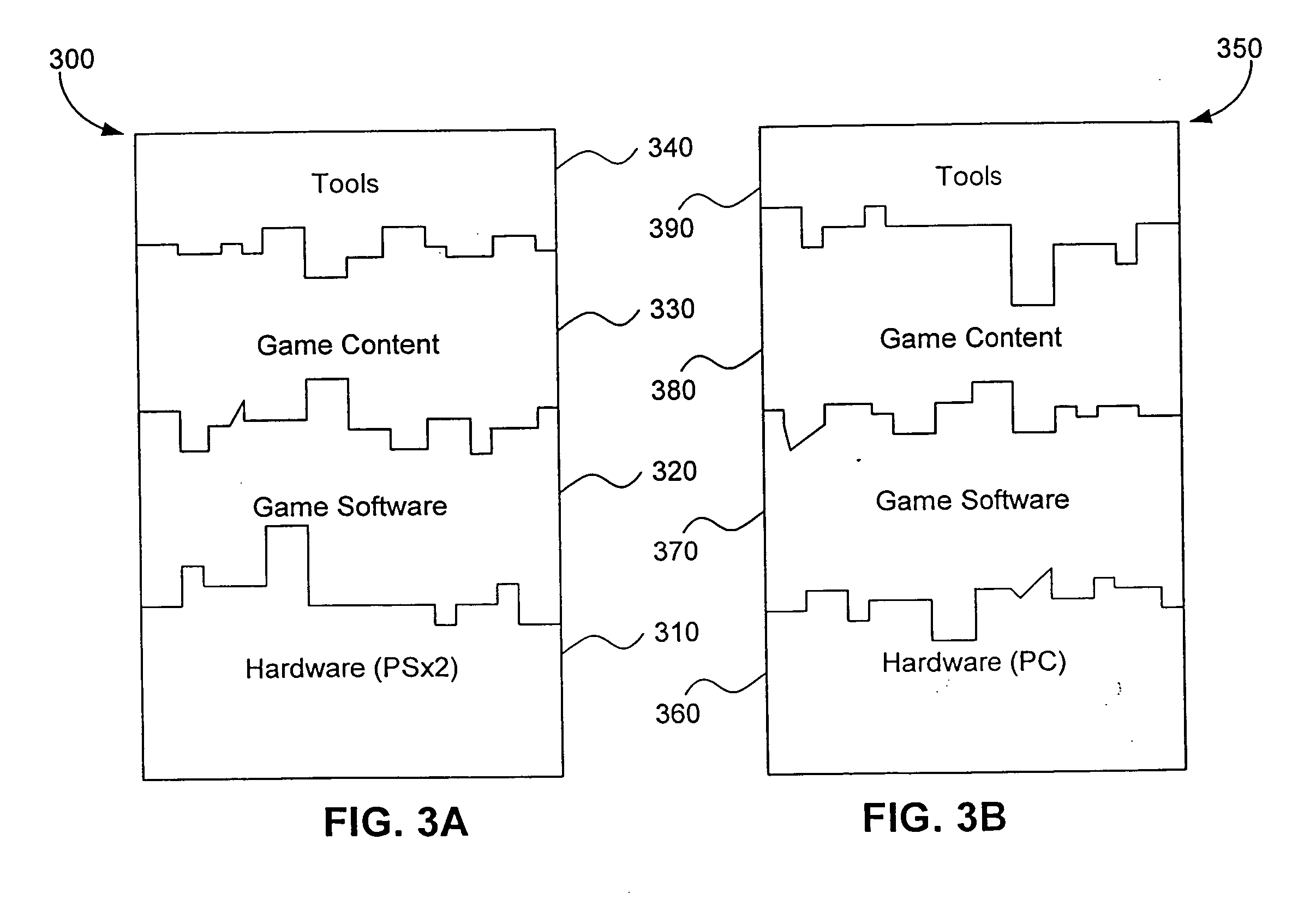System and method for leveraging independent innovation in entertainment content and graphics hardware
a technology of entertainment content and graphics hardware, applied in the field of computer graphics, can solve problems such as the discovery of new barriers, the inability of separate developers to build independent features, and the inability to integrate two or more extensions
- Summary
- Abstract
- Description
- Claims
- Application Information
AI Technical Summary
Benefits of technology
Problems solved by technology
Method used
Image
Examples
examples
[0362] This function takes two integer parameters and returns a floating point value.
(Function (Name FixedToFloat) (Language C++)(Return (Type iFloat))(Parameter (Name HighBits) (Type iInt))(Parameter (Name LowBits) (Type iInt))(ParameterOrder HighBits LowBits)(Implementation (File)))
[0363] Connections
[0364] A link, or “wire,” between two internal blocks or connectors is specified using the Connection property. The wire's properties (what it connects to) are specified using the From and To properties.
[0365] The From property specifies where the input end of the wire is connected. Data flows into this end of the wire. The To property specifies where the output end of the wire is connected. Data flows out of this end of the wire.
[0366] The From and To properties each specify the location of an interface element to be connected. They must be compatible with each other; i.e., they must carry same data type. In an embodiment of the invention, they each have either one or two paramet...
PUM
 Login to View More
Login to View More Abstract
Description
Claims
Application Information
 Login to View More
Login to View More - R&D
- Intellectual Property
- Life Sciences
- Materials
- Tech Scout
- Unparalleled Data Quality
- Higher Quality Content
- 60% Fewer Hallucinations
Browse by: Latest US Patents, China's latest patents, Technical Efficacy Thesaurus, Application Domain, Technology Topic, Popular Technical Reports.
© 2025 PatSnap. All rights reserved.Legal|Privacy policy|Modern Slavery Act Transparency Statement|Sitemap|About US| Contact US: help@patsnap.com



